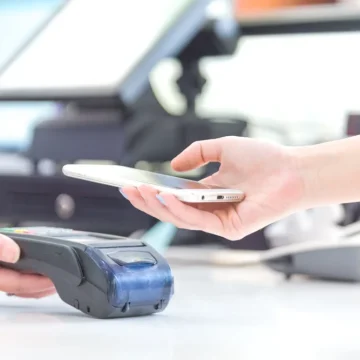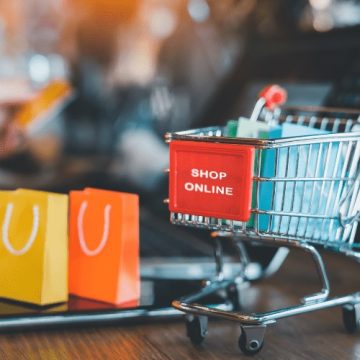In the competitive world of e-commerce, delivery speed has emerged as one of the most influential factors shaping consumer behavior and online shopping preferences. As digital consumers grow accustomed to instant gratification, the ability of retailers to deliver products quickly often determines whether a sale is made or lost. Beyond mere convenience, delivery speed affects perceptions of brand reliability, customer satisfaction, and overall shopping experience. Understanding how delivery speed influences online shopping preferences is critical for businesses aiming to thrive in an environment driven by efficiency and consumer expectations.
The Shift Toward Instant Gratification in Online Shopping
Modern consumers have been conditioned by digital advancements to expect immediate results. From streaming services to on-demand delivery apps, convenience and speed dominate the digital experience. In the context of e-commerce, this expectation translates into an increasing demand for same-day or next-day delivery options. Studies show that nearly 88% of online shoppers consider delivery speed a deciding factor when choosing an online retailer. This shift underscores how integral fast delivery has become in the online shopping journey.
As mobile commerce continues to grow, customers often browse and purchase products impulsively. The expectation that items will arrive quickly reinforces purchasing intent. Slow delivery, on the other hand, introduces hesitation, leading to abandoned carts and lost revenue opportunities for retailers.
The Psychological Impact of Delivery Speed
Delivery speed has a direct psychological effect on purchasing decisions. Fast delivery fosters a sense of instant reward, while delays can lead to frustration and decreased trust in a brand.
Key psychological drivers include:
- Anticipation and gratification: Consumers derive satisfaction from receiving their orders promptly. Faster delivery amplifies this gratification.
- Trust and reliability: Consistent delivery performance strengthens a customer’s trust in a brand’s operational efficiency.
- Perceived value: Even if a product’s price is slightly higher, consumers often perceive faster delivery as adding value to their purchase.
- Anxiety reduction: The shorter the wait time, the less anxiety customers feel about their purchase, leading to a more positive post-purchase experience.
Retailers who understand these emotional touchpoints are better equipped to design delivery systems that cater to the psychology of convenience.
The Connection Between Delivery Speed and Conversion Rates
One of the most significant impacts of delivery speed lies in its influence on conversion rates. The checkout stage is a critical moment in the customer journey, and any uncertainty about delivery time can cause hesitation. Surveys indicate that nearly 50% of online shoppers abandon their carts due to slow or unclear delivery timelines.
Retailers that provide transparent and fast delivery options see higher conversion rates and lower cart abandonment. Moreover, when delivery timelines are displayed clearly and backed by real-time tracking, customers feel more confident completing their purchase. This sense of control over the process reduces cognitive friction and reinforces buying intent.
Consumer Segmentation and Delivery Expectations
Not all shoppers prioritize delivery speed equally. Understanding how different consumer segments perceive speed helps retailers tailor strategies effectively.
1. Urban Consumers
City-based consumers often expect same-day or next-day delivery due to proximity to fulfillment centers. They value convenience and are willing to pay premium fees for fast shipping.
2. Rural Consumers
Shoppers in remote areas may be more patient but still expect timely delivery updates. For these customers, reliability and communication outweigh ultra-fast delivery.
3. Gen Z and Millennials
Younger consumers, raised in the digital age, value instant gratification. They often choose brands based on delivery promises and responsiveness. Mobile-friendly tracking and push notifications significantly enhance their satisfaction.
4. Professional Buyers and Business Users
For B2B transactions, timely delivery is not just a convenience but a necessity. Delayed shipments can disrupt operations, making reliability a primary concern.
By aligning delivery options with demographic expectations, businesses can increase customer satisfaction while optimizing logistics costs.
The Role of Technology in Accelerating Delivery
The integration of advanced technologies is revolutionizing how companies manage delivery speed. From automation in warehouses to predictive analytics in logistics, innovation has become the backbone of efficient e-commerce delivery systems.
Key technological advancements include:
- AI-driven inventory management: Predictive algorithms forecast demand, ensuring products are stored closer to customers for faster dispatch.
- Robotic automation: Automated picking and packaging systems reduce order processing time.
- Last-mile delivery optimization: Real-time GPS tracking and route optimization software improve delivery accuracy and speed.
- Micro-fulfillment centers: These smaller, strategically located warehouses enable same-day delivery in high-demand regions.
- Drones and autonomous vehicles: Emerging delivery methods promise to reduce both delivery time and operational costs.
Technology not only shortens delivery timelines but also provides transparency, enhancing the customer’s sense of control over their order.
How Delivery Speed Affects Customer Loyalty
Fast delivery doesn’t just win a sale—it builds loyalty. Repeat customers often cite reliable and quick delivery as one of their top reasons for returning to a brand. Consistency in meeting delivery promises strengthens emotional bonds with consumers, positioning the brand as dependable.
When businesses fail to meet expected delivery timelines, customers quickly lose trust. Studies show that nearly 70% of consumers would switch to a competitor after one or two poor delivery experiences. Therefore, while fast delivery attracts customers, consistent delivery performance retains them.
Strategies to Enhance Customer Loyalty through Delivery Speed:
- Set realistic expectations: Always under-promise and over-deliver when possible.
- Offer flexible options: Allow customers to choose between standard, express, and scheduled delivery windows.
- Provide real-time updates: Transparency reduces anxiety and builds confidence.
- Reward loyalty: Offer faster delivery or free shipping to repeat customers or loyalty program members.
The Economic Trade-Off: Speed vs. Cost
Balancing delivery speed with cost efficiency remains a major challenge for online retailers. Consumers expect fast and affordable shipping, but logistics infrastructure and labor costs make ultra-fast delivery expensive to maintain.
To balance speed and cost, retailers often:
- Implement tiered delivery pricing models, offering premium fast shipping for an additional fee.
- Utilize regional warehouses to shorten delivery distances.
- Partner with local courier services to reduce last-mile expenses.
- Encourage customers to consolidate orders, minimizing shipping frequency and cost.
Retailers that manage this balance successfully position themselves as customer-centric without compromising profitability.
The Role of Delivery Speed in Building Brand Identity
Delivery performance directly influences brand identity. Businesses known for dependable and quick delivery often gain a competitive advantage and a stronger market reputation. Delivery is no longer a back-end logistics concern; it’s a front-end brand experience.
For example, a fashion retailer known for delivering within 24 hours builds a brand promise of efficiency and responsiveness. Conversely, a delayed delivery can damage reputation instantly, spreading through negative reviews and social media complaints.
Fast delivery becomes part of the overall brand narrative, reinforcing the company’s commitment to customer satisfaction and operational excellence.
Environmental Considerations in Fast Delivery
While consumers love quick delivery, there’s growing awareness about its environmental impact. Same-day shipping often requires additional transportation, increasing carbon emissions. Retailers now face the challenge of balancing eco-friendly logistics with speed.
Sustainable delivery strategies include:
- Consolidating shipments to reduce fuel consumption.
- Using electric vehicles for last-mile delivery.
- Encouraging customers to opt for “green delivery” options during checkout.
- Implementing recyclable and minimal packaging.
By communicating their sustainability efforts transparently, brands can appeal to environmentally conscious consumers without compromising delivery performance.
The Future of Delivery Speed in Online Shopping
The future of online retail lies in hyper-efficient, technology-driven delivery models. As consumer expectations rise, e-commerce businesses will continue investing in infrastructure that supports faster fulfillment. Emerging trends such as AI-driven demand forecasting, smart lockers, and autonomous delivery fleets will redefine how quickly products reach customers.
Additionally, customer personalization will play a key role. Instead of offering one-size-fits-all delivery options, future systems will analyze behavioral data to recommend delivery preferences automatically—striking the perfect balance between speed, convenience, and cost.
Retailers that evolve their logistics capabilities and adapt to these trends will hold a clear competitive advantage in the e-commerce landscape.
FAQs
1. How much does delivery speed really affect online purchase decisions?
Delivery speed directly influences buying decisions. Surveys indicate that nearly half of online shoppers abandon their carts if delivery timelines are too long or unclear.
2. Are customers willing to pay extra for faster delivery?
Yes, many consumers—especially those in urban areas—are willing to pay premium fees for same-day or next-day delivery, provided the service is reliable and transparent.
3. How can smaller online businesses compete with fast-delivery giants?
Smaller retailers can focus on regional delivery, collaborate with local couriers, and set realistic delivery expectations. Personalized service and clear communication can offset slightly slower delivery times.
4. What role does transparency play in delivery satisfaction?
Transparency is crucial. Customers value regular updates and accurate tracking more than unrealistic promises. Clear communication enhances satisfaction even if delivery takes longer.
5. Will fast delivery always remain the top priority for online shoppers?
While speed will remain critical, future shoppers will also value sustainable practices, flexible delivery scheduling, and real-time visibility as part of the overall experience.
In the evolving world of e-commerce, delivery speed has become far more than a logistical detail—it is a defining element of customer experience and brand identity. Retailers that understand and invest in faster, more reliable, and sustainable delivery solutions will not only meet consumer expectations but set new standards for online shopping excellence.














